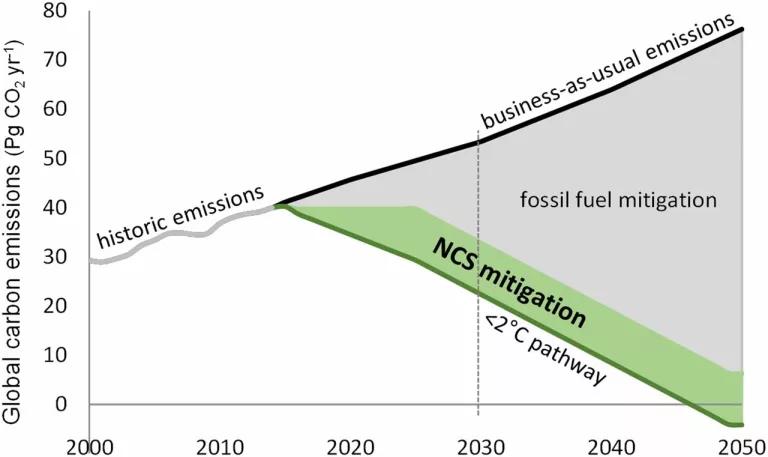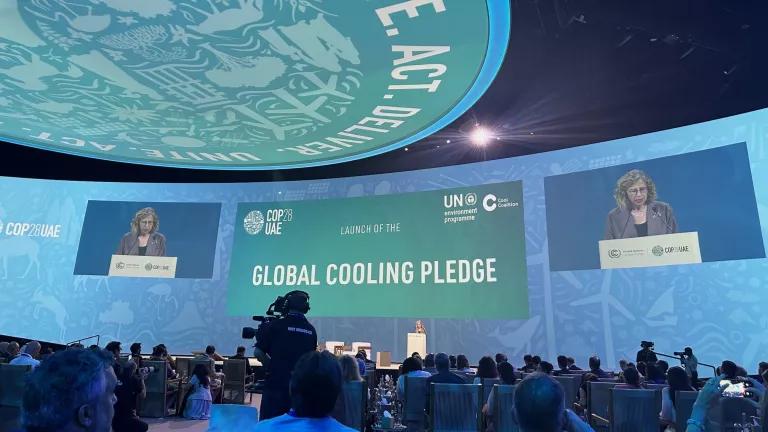Nature Is an Asset in the Fight Against Climate Change
Natural climate solutions are a necessary part of mitigating climate change with many social and environmental co-benefits.

Photo by Tyler Butler
NRDC was formed in 1970 to protect the health and wellbeing of people, communities, and nature. Our efforts to protect the earth started in response to threats to our water, air, and wild places. Nearly 50 years later, that same mission has taken on new life. NRDC’s mission now includes staving off threats to our climate. And that’s because there’s even more reason to remain steadfast in preserving natural, intact landscapes and restoring functioning ecosystems: fighting climate change.
In Fall 2018, the United Nations Intergovernmental Panel on Climate Change indicated that in order to avoid the worst-case climate change scenarios, we must take aggressive action against climate change and limit warming to less than 1.5 degrees Celsius above pre-industrial levels. Around the same time, the Fourth National Climate Assessment documented the litany of suffering that is already occurring due to climate change and described the havoc future climate change will cause. A third report from the National Academy of Sciences suggested that limiting future emissions alone is insufficient to curb climate change; rather “negative” fossil fuel emissions, which actually remove existing carbon from the atmosphere, are essential to avoid a climate catastrophe. These reports underscore the critical role nature can play in “decarbonization”—or removing carbon dioxide from the atmosphere to reduce the extent of climate change.
Natural climate solutions, or ecosystems-based carbon dioxide removal, utilize natural landscapes to absorb and store atmospheric carbon dioxide (CO2). Natural climate solutions include protecting and restoring forests and wetlands, altering farming practices, planting vegetation in areas prone to soil erosion, and changing the way in which grazing lands are managed, among other activities. Knowing how to implement these landscape changes is not the challenge; they can be put into place immediately at relatively low cost. The biggest barriers are political will and funding. But if those barriers are overcome, natural climate solutions offer a profound opportunity to mitigate climate change when implemented alongside technological solutions and reduced reliance on fossil fuels by increasing energy efficiency and investing in clean energy.
Nature serves an array of vital functions for people, some of which simply cannot be quantified or enumerated. In addition to the carbon sequestration benefits, natural climate solutions also offer many social and environmental co-benefits, including but not limited to increased biodiversity, flood buffering, improved water quality, and nutrient cycling. Nature is already doing a lot of climate-mitigation work for us. About half of CO2 emissions in a year are absorbed by the world’s oceans, soils, and vegetation. The oceans alone have absorbed about one-third of anthropogenic emissions (that’s 38 trillion metric tons (MT) of carbon over time).
But we haven’t yet harnessed natural climate solutions in a deliberate and systematic way. Doing so could yield enormous paybacks. One study estimates the total absorption capacity of natural climate solutions in the U.S. is 40-60 billion MT CO2 over the next 50 years, which is significant given that the U.S. currently emits 6 billion MT CO2 per year. Another study found that the maximum potential of natural climate solutions in the U.S. is 1.2 billion (+/- 0.9 to 1.6 billion) MT CO2 per year. That’s 21% of net annual emissions in the country. Both results demonstrate that natural climate solutions could counteract a notable portion of U.S. carbon emissions.

Contribution of natural climate solutions to stabilize warming to below 2-degrees Celsius
Based on these estimates, natural climate solutions can deliver over one-third of the climate mitigation required through 2030 to keep warming to below 2°C. To see the greatest benefit, both ecosystem protection and restoration, not one or the other, must be pursued immediately. Restoration of 350 million hectares of degraded land between now and 2030 could generate $9 trillion in ecosystem services and take an additional 13-26 billion MT of greenhouse gases (GHG) out of the atmosphere (note this is all GHGs, not just carbon). Forests offer the greatest opportunity to capture and store carbon followed by wetlands, croplands, and grass/shrublands. The enormous potential for forests to sequester carbon is a function of the amount of land area that is and could be forested.
NRDC has adapted its mission over the years to reflect changes to the world we live in. Our strategies and tools for addressing climate change—the greatest existential threat of our time—don’t have to be brand new though. Natural climate solutions, in addition to other climate mitigation strategies, are a scalable, affordable solution with well-documented, wide-ranging benefits. It’s time we encode them into policies and practices that address one of the leading challenges of the time—climate change.


